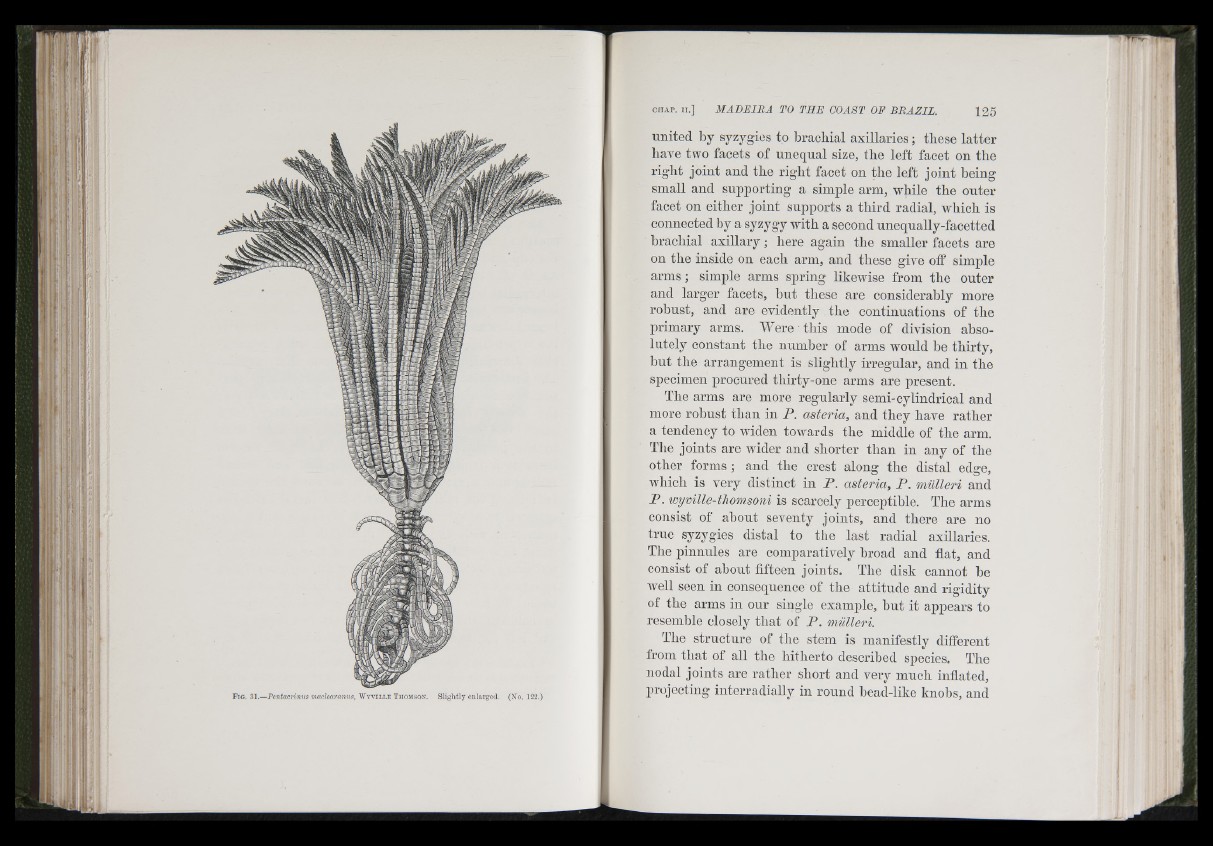
V li 1
■ l i
. Fig. S l.—Pcìitacrinus madearamis, W y v ille Thomson. Slightly enlarged. (No, 122.)
united by syzygies to brachial axillaries ; these latter
have two facets of unequal size, the left facet on the
right joint and the right facet on the left joint heing
small and supporting a simple arm, while the outer
facet on either joint supports a third radial, which is
connected by a syzygy with a second unequally-facetted
brachial axillary ; here again the smaller facets are
on the inside on each arm, and these give off simple
arms ; simple arms spring likewise from the outer
and larger facets, but these are considerably more
robust, and are evidently the continuations of the
primary arms. Were this mode of division absolutely
constant the number of arms would be thirty,
hut the arrangement is slightly irregular, and in the
specimen procured thirty-one arms are present.
The arms are more regularly semi-cylindrical and
more robust than in P. asteria, and they have rather
a tendency to Aviden toAvards the middle of the arm.
The joints are wider and shorter than in any of the
other forms ; and the crest along the distal edge,
Avhich is very distinct in P. asteria, P. mulleri and
P . loyville-thomsoni is scarcely perceptible. The arms
consist of ahont seventy joints, and there are no
true syzygies distal to the last radial axillaries.
The pinnules are comparatively broad and flat, and
consist of about fifteen joints. The disk cannot be
Avell seen in consequence of the attitude and rigidity
of the arms in our single example, hut it appears to
resemble closely that of P . miilleri.
The structure of the stem is manifestly different
from that of all the hitherto described species. The
nodal joints are rather short and very much inflated,
projecting interradially in round head-like knobs, and